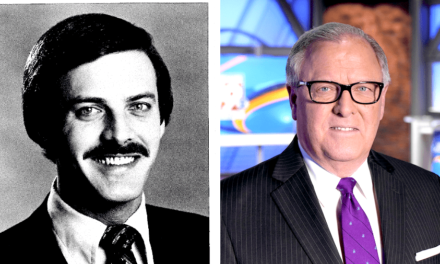by Jessica Daniels
Do you ever wonder what exactly happens during a migraine attack? If you’ve experienced migraines, you know they’re much more than just a headache. They can be incredibly painful and disruptive, often coming in distinct stages that can vary from person to person. Understanding these stages can help you manage your migraines more effectively and seek the right treatment.
Can you tell that a migraine is coming?
As noted by SELF, about half of people living with migraine will notice certain changes in their bodies before things start to get intense.
To fully understand these changes, let’s take a closer look at what each stage of a migraine feels like.
1. Prodrome
This stage can begin hours or even days before the actual headache hits. You might notice subtle changes like mood swings, food cravings, or increased thirst. Some people also experience fatigue, neck stiffness, or heightened sensitivity to light and sound. It’s like your body is giving you a heads-up that a migraine is on its way.
2. Aura
Not everyone experiences this stage, but if you do, it typically happens right before the headache starts. Auras can manifest as visual disturbances like seeing flashing lights, zigzag lines, or blind spots.
Some people also report tingling sensations in their arms or face. Auras are like a surreal preview of the intense headache that’s about to follow.
3. Headache
This is the main event. The headache phase can last anywhere from a few hours to several days. The pain is usually throbbing and can be accompanied by nausea, vomiting, and extreme sensitivity to light and sound.
Some people find it difficult to function normally during this stage and may need to rest in a quiet, dark room. It’s like a storm raging inside your head, making it hard to focus on anything else.
4. Postdrome
After the headache subsides, you might enter the postdrome phase, which can last for hours or even days. During this time, you might feel drained, confused, or even euphoric. Some people experience a sense of relief, while others feel a bit like they’re recovering from a hangover. It’s like the aftermath of a storm, with your body slowly returning to its normal state.
Finding relief
Finding relief for headaches or migraines can be a combination of lifestyle adjustments, self-care practices, and sometimes medical treatments. Here are some tips that may help:
1. Identify Triggers
Keep a diary to track your headaches or migraines and note any patterns or triggers, such as certain foods, stress, lack of sleep, or environmental factors. Avoiding or managing these triggers can help reduce the frequency and severity of your headaches.
2. Manage Stress
Stress is a common trigger for headaches and migraines. Practice stress-reducing techniques such as deep breathing, meditation, yoga, or progressive muscle relaxation to help manage stress levels.
3. Stay Hydrated
Dehydration can trigger headaches, so make sure you drink enough water throughout the day. Avoid excessive caffeine and alcohol, as they can contribute to dehydration and trigger headaches in some people.
4. Maintain a Regular Sleep Schedule
Lack of sleep or irregular sleep patterns can trigger headaches. Aim for 7-9 hours of quality sleep each night and try to maintain a consistent sleep schedule, even on weekends.
5. Watch Your Diet
Certain foods and drinks, such as aged cheeses, processed meats, chocolate, and alcohol, can trigger migraines in some people. Pay attention to your diet and consider keeping a food diary to identify potential triggers.
6. Exercise Regularly
Regular physical activity can help reduce the frequency and severity of headaches. Aim for at least 30 minutes of moderate exercise most days of the week.
7. Practice Good Posture
Poor posture can contribute to tension headaches. Be mindful of your posture, especially if you spend long hours sitting at a desk or using electronic devices.
8. Use Hot or Cold Therapy
Applying a cold pack to the forehead or neck can help numb the pain and reduce inflammation during a migraine attack. Some people find relief from tension headaches by applying a warm compress to the forehead or neck.
9. Consider Over-the-Counter Medications
Over-the-counter pain relievers such as acetaminophen, ibuprofen, or aspirin can help relieve mild to moderate headaches. Always follow the dosage instructions and talk to your doctor if you need to use these medications frequently.
10. Explore Alternative Therapies
Some people find relief from headaches and migraines through alternative therapies such as acupuncture, massage therapy, biofeedback, or cognitive behavioral therapy (CBT). These approaches can help manage pain and reduce stress.
11. Seek Professional Help
If your headaches or migraines are severe, frequent, or interfering with your daily life, it’s important to seek medical advice. A healthcare provider can help diagnose the underlying cause of your headaches and recommend appropriate treatment options, including prescription medications if needed.
Remember that everyone is different, so what works for one person may not work for another. It may take some trial and error to find the best combination of strategies for managing your headaches or migraines.
If you experience migraines, it’s important to work with your healthcare provider to find the best ways to manage them. Keeping a migraine diary can help you track your symptoms and identify triggers, which can be helpful information for your doctor. With the right treatment plan, you can hopefully minimize the impact of migraines on your life and find some relief from these challenging episodes.











